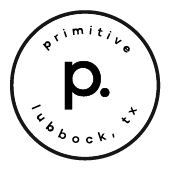BLOG Breaking Down Real Time Marketing
Breaking Down Real Time Marketing
POSTED BY The Prim Pack | Nov 18, 2020

If you follow any sources for digital marketing and strategy, you’re going to come across phrases like editorial calendar and content schedule (or some variety of these connotations). The reality is that careful, successful marketing requires a plan – a plan that needs to happen in advance. When you think about all that goes into a campaign that achieves your desired results, this makes a lot of sense. You need time to develop content, a flow for generating leads, posts to share on social, and ads to help drive traffic to it all.
But, the problem with planning and working in advance is that your marketing can miss out on golden opportunities to connect with prospects about things that are relevant and important to them right now. In the world of digital, this is known as real time marketing. In order to build a digital marketing strategy that will attract prospects and allow your brand to intentionally and authentically connect with them, you need to have a plan for including real time components in your content, emails, and posts on social media.
What is Real Time Marketing?
We’ve talked before about how marketers aren’t necessarily the most creative namers. This isn’t a bad thing, as most aspects of marketing mean much of what you think they would mean. Real time marketing is no different. Just like the name implies, real time marketing involves the creation and distribution of content that is relevant and applicable to events happening in real time.
We’ve seen brands that get this right in their marketing all the time. Whether it’s a helpful blog post about how to survive crazy weather, a review of a gadget that everyone thinks they can’t live without (looking at you, air fryer), or a social post about an event like a championship game, award celebration, etc, we can all think of examples of real time marketing that is done well and tastefully. One of the most infamous is Oreo’s timely and humorous “You can still dunk in the dark” during the 2013 Super Bowl game when the electricity went out and left the entire stadium in the dark.
Here’s why this matters: marketing is all about making a connection with prospective customers. That connection allows you to begin the process of building a relationship with a prospect – a relationship that can lead to the prospect becoming a lifelong customer. One of the ways to create or initiate that connection is to pay attention to what is happening in the world around your prospects and incorporating those events into your marketing. This kind of content will be very engaging and is likely to do well in search since it’s timely and helpful.
How to Create a Real Time Marketing Strategy
So, we can agree: real time marketing is a good and helpful thing. You might even say it’s a necessary part of any successful digital marketing strategy or campaign. But how do you take it from a good idea to a tangible reality? Glad you asked.
- Communicate with your team. In the same way that two sets of hands are better than one, multiple eyes and ears staying aware of news, holidays, and events is better than just one person. Have your team communicate with one another about what is going on in the world and what could be a good fit for your brand. Our team uses Slack for much of our communication, and this is a perfect place to keep one another informed of things that could be relevant to share.
- Find ways to be aware of news and events. Piggybacking off this idea, use the tools at your arsenal to make it easier for you to stay current and relevant without spending all of your time tracking news cycles. Subscribe to helpful news newsletters, monitor hashtags on social media, or spend a few minutes perusing the top stories on social platforms like Twitter. It is possible to stay abreast of all that is happening without losing your mind (and your soul).
- Have a plan or criteria to evaluate what you will share.
 If you’re a roofing company, you probably don’t need to jump on the bandwagon of sharing the best gift ideas for Valentine’s Day. But, you might find it engaging and intriguing to share about an anniversary of the Sistine Chapel, along with fun facts about its roof.
If you’re a roofing company, you probably don’t need to jump on the bandwagon of sharing the best gift ideas for Valentine’s Day. But, you might find it engaging and intriguing to share about an anniversary of the Sistine Chapel, along with fun facts about its roof. - Determine the best medium for sharing with your audience. Once you know what you are going to share about, decide how you will share it with your audience. It’s very easy to only think about social with real time marketing, but that completely takes away from other tools in your arsenal. Sometimes longer form content like a blog post or email allows you to be more helpful and offer greater value than if you just share a quick quip on social media.
- Create, share, and monitor. Once you’ve made your plan, execute it. Create your content, share it, and then monitor the results. Because content that is part of a real time marketing strategy tends to be highly engaging, plan on being more active on social, chat, and email to make sure you’re attentive to your audience as they have comments or questions.
A word of caution before you start hunting down the most relevant current news and events. One temptation with real time marketing is to jump on every hot topic and ride it as long as you can. But, this is a really good way to have a trainwreck. Not all things need to be shared by a brand, and your first choice for how you will word your content might not be the best fit. Avoid the pressure of feeling like you need to be the very first to post about something. Take the time to reflect about what you’re sharing and how you’re sharing about it. If you’re worried it could come across as insensitive or tactless, just avoid it.
Real Time Marketing for Your Ideal Customer
We discuss often (and at length) the important role your buyer personas play in digital marketing. Part of knowing your ideal customer inside and out means you know what news, events, and holidays will be relevant to them and can create content that engages and delights your audience. Real time marketing allows you to engage and connect with prospects about things they are already talking about online.
Want a little help identifying and creating your buyer personas? We’ve put together a tool to get you started on identifying your ideal customers and everything that makes them unique. Get started below!
SHARE THIS POST:

About the writer, The Prim Pack
Primitive is a full-service digital agency specializing in strategy, branding, web development, and technology solutions. With a passion for innovation and a commitment to helping businesses grow, our team crafts digital experiences that make an impact.
